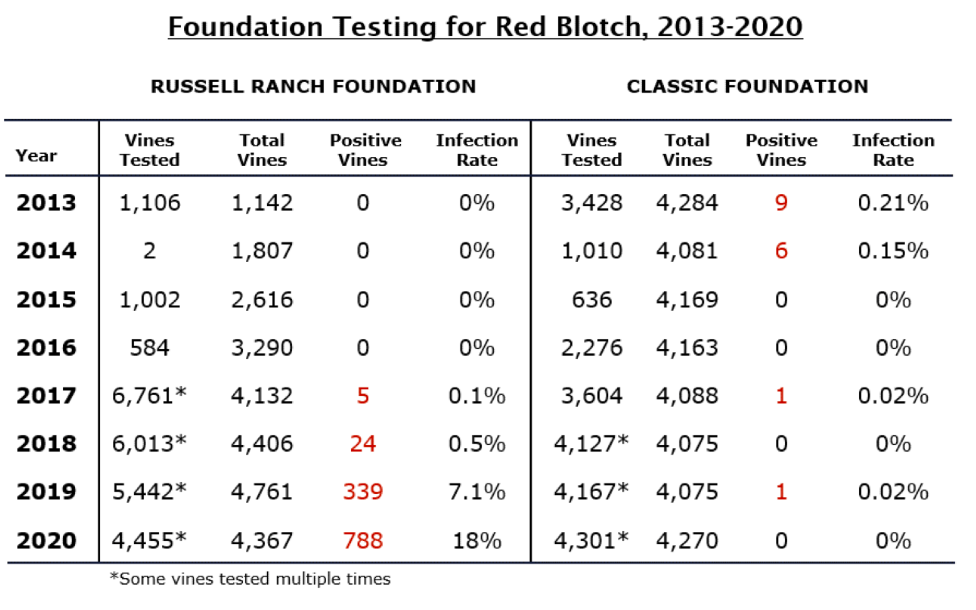Red Blotch Update
Grapevine Red Blotch Virus (GRBV) remains a threat to vineyards in the United States still with no way to
prevent it or treat infected grapevines. The USDA has given a $3 million grant to scientists studying vineyards
in California and Oregon to find ways of controlling the disease. Particular attention will be paid to the three-cornered
alfalfa hopper (Spissistilus festinus), an insect vector that is attracted to grapes.
Foundation Plant Services (FPS) at UC Davis has been testing grapevines in its foundation vineyards for
GRBV since 2013. A recent report released by FPS Director Deborah Golino showed that red blotch infection
rates have remained extremely low in the Classic Foundation Vineyard, ranging from 0% to 0.21% since 2013.
None of the 4,270 vines was infected in 2020. Russell Ranch Vineyard (RRV) remained unaffected until 2017
when 5 vines or 0.1% were infected with GRBV. Since then, despite significant efforts to prevent the occurrence of
the disease, the infection rate in the vineyard has increased to 7.1% in 2019 and 18% in 2020 (see table).
The incidence of red blotch at RRV is due to field transmission of GRBV. All propagated vines related to the
positive vines tested negative in every case. In 2018, a test-to-order policy was instituted to further ensure
orders being shipped were negative prior to distribution.
One of the greatest challenges in managing red blotch has been vector-mediated transmission. The three-cornered
alfalfa hopper has been documented as a vector in greenhouse studies and has been found in RRV.
FPS has implemented more frequent vineyard inspections and additional spray treatments targeting the vector
and has developed a comprehensive program for control of this vector. Despite those precautions, there
remains a risk of other unknown vectors transmitting red blotch.
FPS has discontinued distributing material from RRV because of the level of red blotch infection. Grapevine
material from the Classic Foundation Vineyard will continue to be available for distribution and is tested for
GRBV as dormant canes prior to shipping.
FPS is designing a 24,000 square foot ‘Emergency Greenhouse’ that will protect approximately 4,000 of FPS’
most valued Foundation grapevines. This will protect the material from vectors and guarantees immediate
access to the clean plant material in case of field infection.



